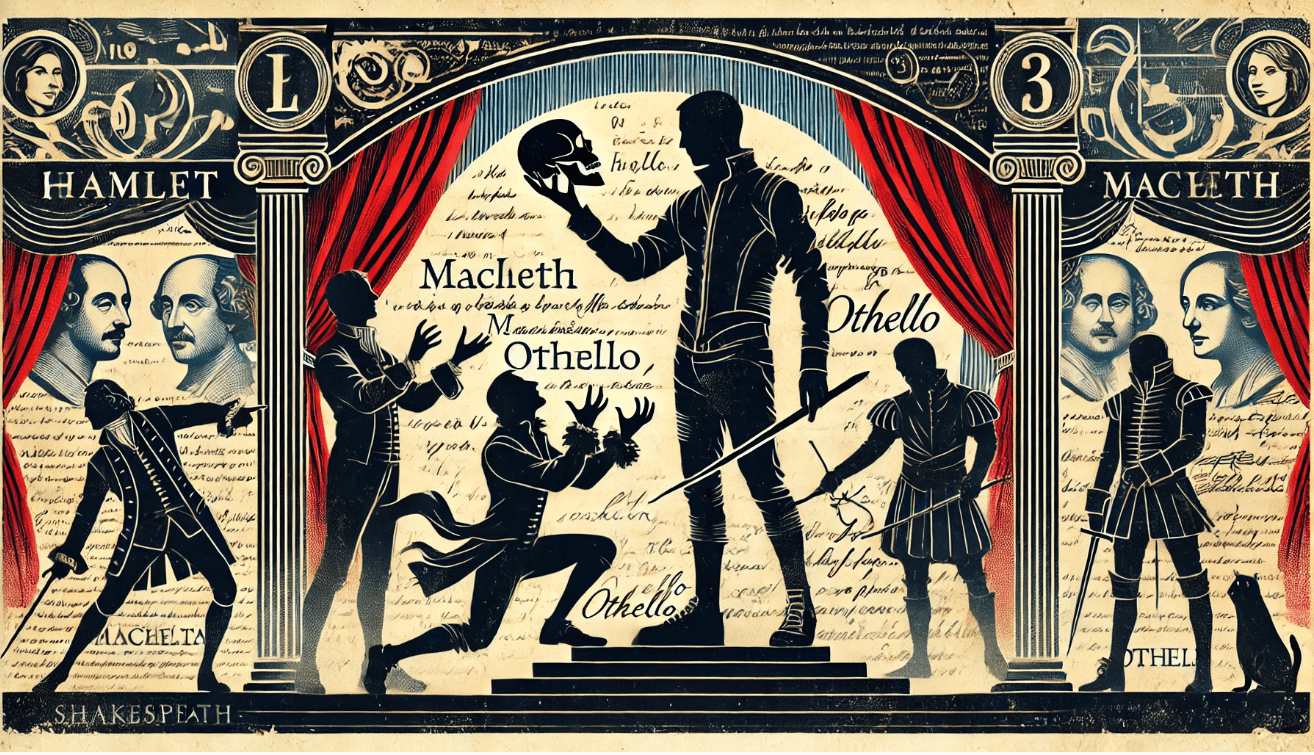There’s no fixed length, but it should be long enough to explore a key emotional or moral dilemma without dragging. A few strong, focused paragraphs or lines are often more powerful than a long, rambling speech.

The Role of Soliloquies in Exploring Character Motivations: A Practical Guide for Literature Students and Writers
Ever wondered what your favorite characters really think when no one else is listening? 🎭 Soliloquies—those powerful, private speeches—offer a rare window into a character’s deepest motivations, fears, and desires. But why are they so effective, and how do they shape the way we understand a story? That’s where the role of soliloquies in exploring character motivations becomes essential. Whether you’re a literature student trying to ace an analysis or a writer looking to craft authentic characters, this guide breaks it all down—simply, clearly, and practically. Let’s unlock the emotional and narrative power behind the words characters speak when they’re truly alone.
Table of Contents
Toggle1. What Is a Soliloquy? 🎭
A soliloquy is a dramatic speech where a character speaks their thoughts out loud—usually when they’re alone on stage. Unlike regular dialogue, a soliloquy isn’t meant to be heard by other characters. It’s a direct line into the character’s mind, revealing their true feelings, internal struggles, and motivations.
Think of it as the original version of a voiceover in movies or the inner monologue in a novel. It’s raw, honest, and often deeply emotional.

✅ Soliloquy vs. Monologue vs. Aside
Here’s a quick breakdown to avoid confusion:
Term | Who’s listening? | Purpose |
Soliloquy | No one (just the audience) | Reveal inner thoughts and motivations |
Monologue | Other characters may hear | Tell a story or share a long speech |
Aside | Only the audience (brief) | Comment secretly on the action |
Why This Matters:
Understanding what a soliloquy is helps you:
- Analyze literature more deeply 📚
- Identify hidden emotions and conflicts
- Write stronger, more believable characters if you’re a writer ✍️
Soliloquies are more than just speeches—they’re the key to unlocking a character’s why. And as you’ll see in the next sections, that insight can change the way you read and write stories forever.
2. Why Soliloquies Matter: The Narrative Purpose 🎯
Soliloquies aren’t just dramatic speeches—they serve a powerful storytelling function. At their core, soliloquies give the audience something no other part of a play or novel can: direct access to a character’s inner world.
🎙️ Revealing the Unspoken

In regular dialogue, characters often hide their true thoughts. But in a soliloquy, there’s no filter. This is where we discover:
- Their true intentions
- Inner conflicts they can’t express to others
- Deep fears, desires, and doubts that drive their actions
📖 Example:
In Hamlet, the famous “To be or not to be” soliloquy shows the prince wrestling with the idea of existence itself—something he couldn’t reveal in conversation. Without that soliloquy, we’d only see his strange behavior, not the painful thoughts behind it.
🧠 Building Emotional Connection
Soliloquies help readers and viewers:
- Understand why a character makes certain choices
- Sympathize with them, even when they make mistakes
- Predict future actions by analyzing their emotional state
It turns characters from flat figures into real, relatable people with complex motivations.
✅ Why It Matters to You:
Whether you’re analyzing a play, writing a story, or acting out a scene, recognizing the narrative role of soliloquies helps you:
- Interpret characters on a deeper level
- Create more realistic and engaging dialogue
- Uncover the emotional heart of any story
In short, soliloquies don’t just move the plot—they reveal the soul behind the story. ❤️
3. How Soliloquies Develop Character Depth 🧠✨
One of the most powerful tools for building rich, believable characters is the soliloquy. When done well, it adds layers of emotional and psychological depth that dialogue alone can’t reveal.
🧩 Showing What Characters Really Think
In a soliloquy, a character isn’t trying to impress, persuade, or deceive anyone—they’re speaking to themselves. This honesty allows us to see:
- Conflicting thoughts or emotions
- Doubts they hide from others
- Desires they may not even fully understand
This raw, inner voice helps transform a character from a one-dimensional figure into a complex, realistic human being.
🎭 From Archetype to Individual

Without soliloquies, many characters would feel like stereotypes: the villain, the hero, the fool. But when we hear them speak privately, they become more:
- Vulnerable
- Relatable
- Unpredictable (in a good way!)
For example, Macbeth may seem like a ruthless killer—but through his soliloquies, we witness his guilt, hesitation, and fear. That inner conflict makes him unforgettable.
✍️ Why This Matters for You
If you’re a literature student, understanding a soliloquy means unlocking the full emotional context of a scene.
If you’re a writer, using soliloquies (or internal monologue) can make your characters feel more alive and multidimensional.
✅ Pro Tip: Always ask, “What does this soliloquy reveal that no one else in the story knows?” The answer often holds the key to understanding a character’s true nature.
Soliloquies don’t just move the plot forward—they pull us closer to the emotional truth of the character. That’s what makes them so essential. 💡
4. Practical Tips: How to Analyze a Soliloquy 🔍✍️
Analyzing a soliloquy might seem intimidating at first—but it doesn’t have to be. With the right steps, you can break it down easily and uncover the character’s deepest thoughts and motivations.
Here’s a simple, practical method you can use every time:
✅ 1. Understand the Context
Before diving into the speech, ask:
- What just happened in the story?
- Where is the character emotionally or mentally at this point?
This background helps you interpret their words more accurately.
✅ 2. Identify the Main Emotion
What’s the dominant feeling the character expresses?
😠 Anger? 😢 Sadness? 😨 Fear? 🧩 Confusion?
Understanding the emotion gives you insight into their mindset and what’s driving their actions.
✅ 3. Spot Internal Conflicts
Look for contradictions or tension within the speech:
- Are they torn between two choices?
- Do their words show fear, guilt, or hesitation?
These conflicts often reveal real motivation.
These clues often point to what the character values—or fears most.
✅ 5. Ask: What Does the Audience Learn? 👀
A soliloquy is written for us, not for other characters. Ask:
- What new information is revealed here?
- How does this help us understand the character’s next move?
🎯 Quick Summary Checklist:

- What just happened before this?
- What emotion is being expressed?
- What’s the internal struggle?
- Any powerful imagery or repetition?
- What does this reveal about the character’s motivation?
With practice, analyzing a soliloquy becomes second nature. The key is to listen closely to what the character isn’t saying outright—and trust the clues in their words. 😊
5. Writing Effective Soliloquies: A Guide for Creative Writers ✍️🎭
Soliloquies aren’t just for Shakespeare—they’re a powerful tool for modern storytellers, too. Whether you’re writing a play, novel, or screenplay, a well-crafted soliloquy can add depth, emotion, and clarity to your character’s journey.
Here’s how to write one that actually works:
🎯 1. Know Your Character’s Inner Struggle
Start with a clear internal conflict. A soliloquy should reveal a decision, dilemma, or hidden emotion the character can’t express to others.
Ask yourself:
- What is the character afraid to say out loud?
- What truth are they avoiding?
- What moment forces them to confront it?
🧠 2. Make It Honest, Not Polished
A good soliloquy feels raw and unfiltered. Don’t aim for perfect grammar or poetic language—go for emotional truth.
Try:
- Stream-of-consciousness thoughts
- Contradictory emotions
- Incomplete sentences or rhetorical questions
This makes it feel authentic, not staged.
🗣️ 3. Let the Voice Feel Personal
Keep the tone consistent with your character’s personality. A shy teen and a ruthless CEO won’t think—or speak—the same way.
Tips:
- Use words and phrases they’d naturally say
- Include their habits, fears, or slang
- Avoid making it sound like exposition for the reader
⏱️ 4. Keep It Purposeful and Tightly Focused
Soliloquies shouldn’t ramble. Stick to one core emotional journey:
- Start with a clear feeling (e.g., confusion)
- Build to realization or resolve
- End with a shift—new insight, plan, or question
Even a short soliloquy can be powerful when focused.
💡 5. Use Soliloquies to Create Turning Points
Think of soliloquies as emotional turning points. They’re most effective when they come before a major decision or shift in behavior.
Examples:
- A hero deciding to fight
- A villain questioning their own motives
- A lover choosing to confess—or walk away
6. Famous Examples of Soliloquies in Literature 🎭📚
The best way to understand the power of soliloquies is to study how great writers have used them. Below are some of the most famous—and effective—soliloquies in literature, each offering a clear window into a character’s deepest thoughts and motivations.
🧠 Hamlet by William Shakespeare
Soliloquy: “To be or not to be…”
What it reveals: Hamlet questions the value of life itself. His words expose deep depression, fear of the unknown, and emotional paralysis.
Why it matters: We see a prince caught between action and inaction—this internal struggle defines the play.
🗡️ Macbeth by William Shakespeare

Soliloquy: “Is this a dagger which I see before me…”
What it reveals: Macbeth’s ambition clashes with his conscience as he prepares to commit murder.
Why it matters: It shows how guilt and ambition can exist side by side, driving irrational decisions.
💔 Othello by William Shakespeare
Soliloquy: “It is the cause, it is the cause, my soul…”
What it reveals: Othello convinces himself he must kill Desdemona, twisting love into justification for violence.
Why it matters: It gives us a painful look into self-deception and tragic misunderstanding.
🧓 Death of a Salesman by Arthur Miller
Soliloquy-like Moments: Willy Loman’s internal monologues
What they reveal: Willy reflects on failure, lost dreams, and the pressure to appear successful.
Why it matters: These fragmented thoughts give voice to anxiety, regret, and disillusionment in modern life.
❤️ Jane Eyre by Charlotte Brontë
Soliloquy-like Passage: Jane debates leaving Mr. Rochester after discovering his secret.
What it reveals: Jane’s inner voice wrestles with love vs. self-respect.
Why it matters: We gain insight into her strength and moral clarity—key to her character arc.
7. Real-World Applications: Why This Matters 🌍✍️
Understanding the role of soliloquies in exploring character motivations isn’t just useful for passing a literature class—it has practical, real-world value for students, writers, actors, and storytellers of all kinds.
🎓 For Literature Students
Soliloquies are often key to understanding a character’s true mindset. Mastering how to analyze them helps you:

- Write stronger essays with deeper insights
- Answer exam questions with more confidence
- Stand out in class discussions by going beyond surface-level interpretation
✅ Bonus: Teachers love when you explain not just what a character says—but why they say it when no one’s listening.
✍️ For Creative Writers
If you’re building characters from scratch, soliloquies are a goldmine for:
- Exploring inner conflict
- Revealing key emotional turning points
- Writing realistic, multi-layered characters
Even in modern fiction, internal monologue plays a similar role. Soliloquy-style writing makes your characters feel real—and readers more connected to them.
🎭 For Actors and Performers
Soliloquies are essential for:
- Understanding your character’s inner world
- Delivering lines with true emotional depth
- Making moments of stillness feel just as powerful as action
Performing a soliloquy well often means becoming the character—not just playing them.
🤖 For Modern Storytelling (and AI tools!)
Soliloquies also help:
- Screenwriters craft character-driven narratives
- AI models (like voice assistants or game characters) simulate emotional depth
- Educators teach empathy, perspective, and narrative structure
Why It All Comes Together 💡
At the heart of every powerful story is a character with a choice, a doubt, or a dream—and the soliloquy is where we see that. Whether you’re analyzing literature or creating your own stories, learning how soliloquies work gives you a clearer, more human view of your characters—and of yourself.
9. Common Mistakes to Avoid 🚫📝
Whether you’re analyzing soliloquies in literature or writing your own, there are some common pitfalls that can hold you back. Let’s break down the most frequent mistakes—and how to avoid them.
1. Treating Soliloquies Like Regular Dialogue
Soliloquies are not just characters talking. They’re private moments of truth, revealing what the character wouldn’t say out loud to anyone else. Avoid writing or analyzing them like regular conversations—they’re more intimate and introspective.
2. Overcomplicating the Language
Many students and writers try to sound “deep” by using overly complex words or long, confusing sentences. This can make the soliloquy (or your analysis) feel forced or unclear.
3. Ignoring the Character’s Emotional Journey
It’s easy to summarize what a soliloquy says without exploring how the character feels. But the real value is in the emotional shifts—what changes from the start to the end of the speech?
4. Using Soliloquies Just to Explain the Plot
In writing, don’t use soliloquies as a “lazy” way to deliver background information. And in analysis, don’t reduce them to plot summaries—they’re about why a character makes a choice, not just what happens next.
5. Forgetting the Context
Analyzing or writing a soliloquy without understanding the scene it’s in is like looking at one puzzle piece and ignoring the rest. You need the full picture to make sense of the moment.
Final Reminder:
Soliloquies are a window into the soul, not a stage for showing off. Keep them raw, honest, and human. Whether you’re studying or creating them, avoid these mistakes and you’ll unlock their true power 🔓💭
Master the art of the soliloquy, and you’ll gain deeper insight into both characters—and people.
Mastering the Art of Soliloquies 🎭✨
Soliloquies are powerful tools—whether you’re a student analyzing Shakespeare or a writer creating your own characters. They give us a direct line to a character’s inner world, revealing thoughts, fears, dreams, and dilemmas in a raw, unfiltered way.
For literature students, understanding soliloquies means going beyond the surface. You’ll gain deeper insight into character development, plot structure, and author intent. Look for emotional shifts, repeated phrases, and contrasting ideas—these are often clues to what really drives the character.
For writers, soliloquies can unlock new creative depths. Want your readers to feel your character’s pain, joy, or inner conflict? A well-placed soliloquy lets the audience connect on a personal level. Think of it as a quiet spotlight moment—a space where your character breathes, thinks, and speaks directly to the reader or viewer.
Frequently Asked Questions (FAQs)
1. What is the purpose of a soliloquy in literature?
A soliloquy reveals a character’s private thoughts, feelings, and motivations—things they wouldn’t say to others. It helps the audience understand what’s really going on inside the character’s mind.
2. How do soliloquies help show character motivation?
Soliloquies give insight into why a character makes certain choices by showing their internal struggles, doubts, and desires. This helps readers or viewers connect more deeply with the character’s journey.
3. What’s the difference between a soliloquy and a monologue?
A soliloquy is spoken alone and directed to the audience or themselves—like thinking out loud. A monologue may be spoken to other characters and is more public in tone.
4. Why are soliloquies important for writers to use?
Writers can use soliloquies to develop deeper, more complex characters. They provide a moment of honesty and vulnerability that reveals what drives the character beyond the surface.
5. How can I analyze a soliloquy effectively as a student?
Focus on the emotions, word choices, and shifts in tone or thought. Ask yourself: What does the character reveal about themselves here? What decision are they grappling with?
6. Can soliloquies be used in modern writing or storytelling?
Yes! Soliloquies work in novels, plays, screenwriting, and even voiceovers in films or shows. They’re timeless tools for showing inner conflict and building emotional depth.
7. What are common mistakes to avoid when writing a soliloquy?
Don’t use it to dump information or sound overly formal. Avoid making it feel forced—keep it natural, emotional, and true to the character’s voice.
